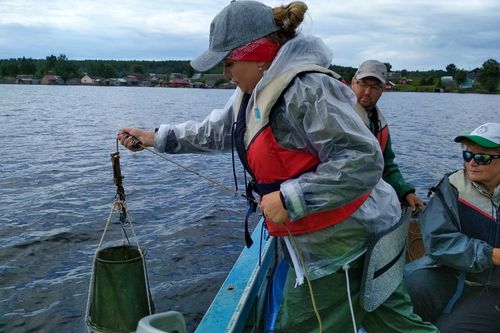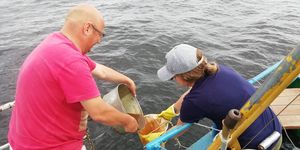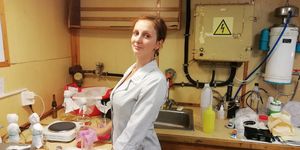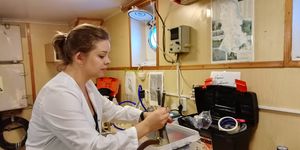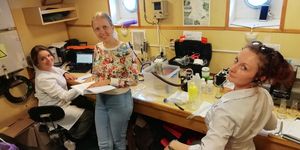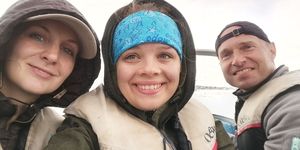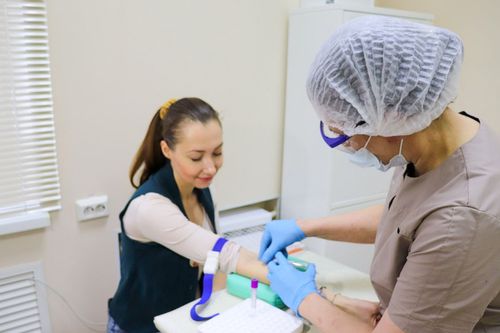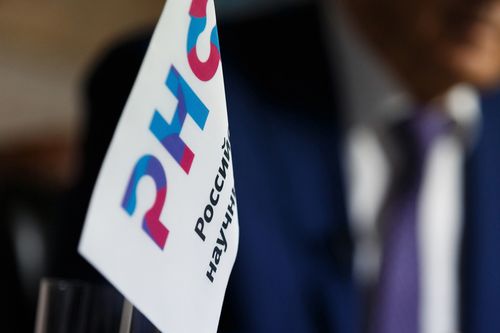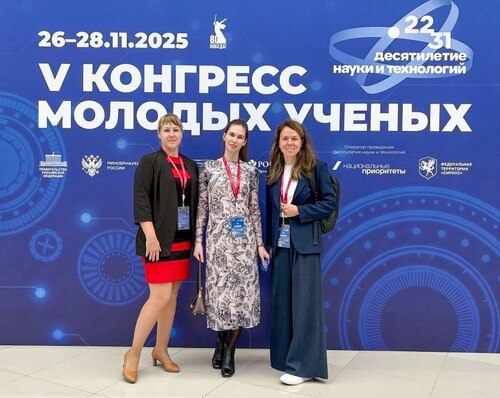– What characterizes the current situation in waterbodies of Karelia, as well as in the whole of Northwest Russia, is that human impact is markedly intensified by climate warming. This triggers a dangerous phenomenon – water blooming with potentially hazardous cyanobacteria. We now observe such processes in lakes Vedlozero, Kroshnozero, and others. Can these phenomena happen in Lake Onego or Vygozerskoe storage reservoir, which are exposed to different anthropogenic impacts? Finding the answer to this question was the mission of our expedition, – tells Natalia Kalinkina, Dr. of Biology, Leading Researcher, Head of Hydrobiology Laboratory NWPI KarRC RAS.
As scientists explain, intensive warming up of the surface water layer in abnormally hot years accelerates lake eutrophication. The main pollution sources for Lake Onego and Vygozerskoe storage reservoir are pulp-and-paper mills. Besides, trout farms have influenced Onego in the past few decades. What makes the situation even more complicated is the high permissible levels introduced for mineral phosphorus in lake water in the 1990s.
– It is therefore critically important to monitor the situation in areas exposed to industry and trout farming impacts. The data collected during the expedition will be used to verify the 3D biogeochemical model of the Lake Onego ecosystem currently being developed at NWPI KarRC RAS, – Natalia Kalinkina informs.
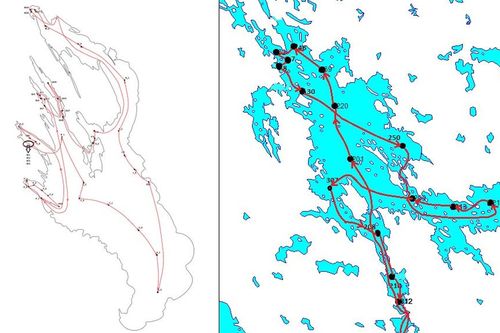
Ekolog vessel itineraries in Lake Onego and Vygozero storage reservoir
The mission for the scientists taking part in the expedition was to carry out a multidisciplinary study of Lake Onego (Verkhne-Svirskoe storage reservoir) and Lake Vygozero (Vygozerskoe storage reservoir) to explore the current state, predict future changes, and help conserve their valuable resources. This task required collecting data on the water temperature, chemical and hydrobiological parameters in different parts of the waterbodies.
The team has collected data on water color, total and mineral phosphorus content, dissolved organic carbon in different regions of the impounded lakes. Hundreds of water samples were taken. E.g., 207 samples were taken for assessing the state of bacterial plankton through microbiological analysis, 170 samples – for estimating the quantities of water fungi.
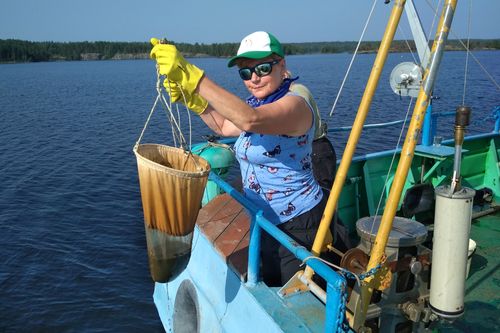
To analyze different parameters of macrozoobenthos (species composition, structure, abundance, biomass, production) 44 sediment samples were collected. In the photo: Natalia Kalinkina, Head of Hydrobiology Laboratory, NWPI KarRC RAS
Sample collection was done simultaneously with measuring water transparency by Secchi disk and measuring water temperature and conductivity by Cast-Away probe. The most detailed part of the effort was the hydrobiological survey, yielding determinations of the quantitative and structural parameters of bacterial plankton, phytoplankton, zooplankton, macrozoobenthos, and chlorophyll a content at 42 sites in Lake Onego and 16 sites in Vygozerskoe storage reservoir.
– Studies of the past decades have shown an increase in the deposition of allochthonous iron imported with discharge from rivers on Onego lakebed, which has possibly caused inhibition of pelagic benthos, relict crustaceans Monoporeia affinis – the main food item for Coregonids. So, it was necessary to continue 30-year benthos observation series and assess the present-day status of food resources for valuable fish species of Lake Onego, – Natalia Kalinkina adds.
The results of the expedition will be reported in article submissions to scientific journals.
Info: Valeria Smirnova / NWPI KarRC RAS
Photos: Natalia Kalinkina, Aleksey Tolstikov / NWPI KarRC RAS




